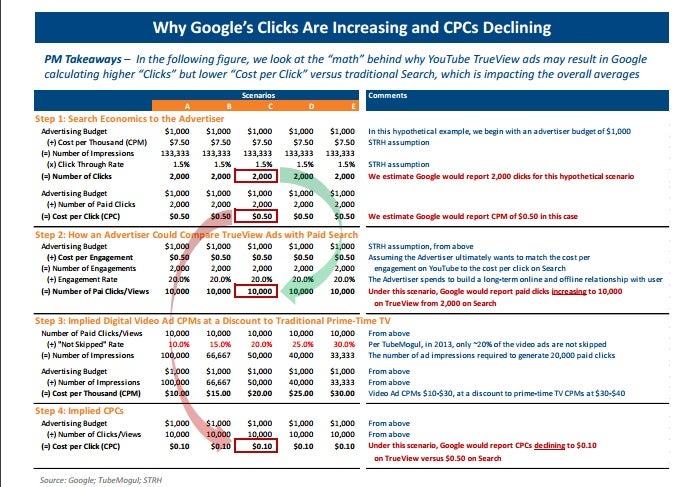Robert "Bob" Peck of SunTrust Robinson Humphrey released on Wednesday part one of his 'Understanding YouTube Advertising' series.
Peck cited eMarketer data, which estimate U.S. digital video ad spend will surge to $17 billion by 2020 from $8 billion in 2015. As the most dominant online video platform, Alphabet Inc GOOG GOOGL's YouTube is positioned to benefit with its over 1 billion global user base, which views hundreds of millions of hours of videos daily.
There is, however, some confusion among investors as to how exactly YouTube monetizes the platform. Peck's note attempts to clear up much of the confusion.
"We think it’s important for investors to understand the complexity of advertising options and the impact on “clicks” and CPCs, which ultimately drive revenue," Peck wrote. "This dynamic market offers great opportunity for Google and Facebook Inc FB and we reiterate our Buy recommendations."
>Background Information
YouTube offers advertisers several options, including a video displayed at the top of the YouTube homepage that is designed and intended to look "native" to the site. This may be an image or a video. YouTube also shows ads before or during a video that are either mandatory to view for 30 seconds or can be skipped after five seconds.
Google considers each ad a "click" whenever the user clicks on the ad to play in full-screen, unmutes an autoplay video, doesn't skip a full-length ad, clicks on the banner or takes any other form of action in which the advertiser has another opportunity to showcase its product or service.
The largest driver of revenue growth for YouTube is the full-length ads that can be skipped after five seconds. The advertiser only pays for the ad, known as a 'TrueView ad' if it is watched for 30 seconds or more, or if the viewer interacts with the message.
Overall "clicks" have been rising at a strong rate over the past three years, but the Cost per Click (CPC) has been declining.
Why Clicks Are Rising But CPC Is Falling
At first glance, it appears to be confusing: How is it that the total number of "clicks" are rising but the cost per click (CPC) is declining?
Peck provides a hypothetical example to help explain the math behind the trend.
Edge Rankings
Price Trend
© 2025 Benzinga.com. Benzinga does not provide investment advice. All rights reserved.
date | ticker | name | Price Target | Upside/Downside | Recommendation | Firm |
|---|
Trade confidently with insights and alerts from analyst ratings, free reports and breaking news that affects the stocks you care about.
